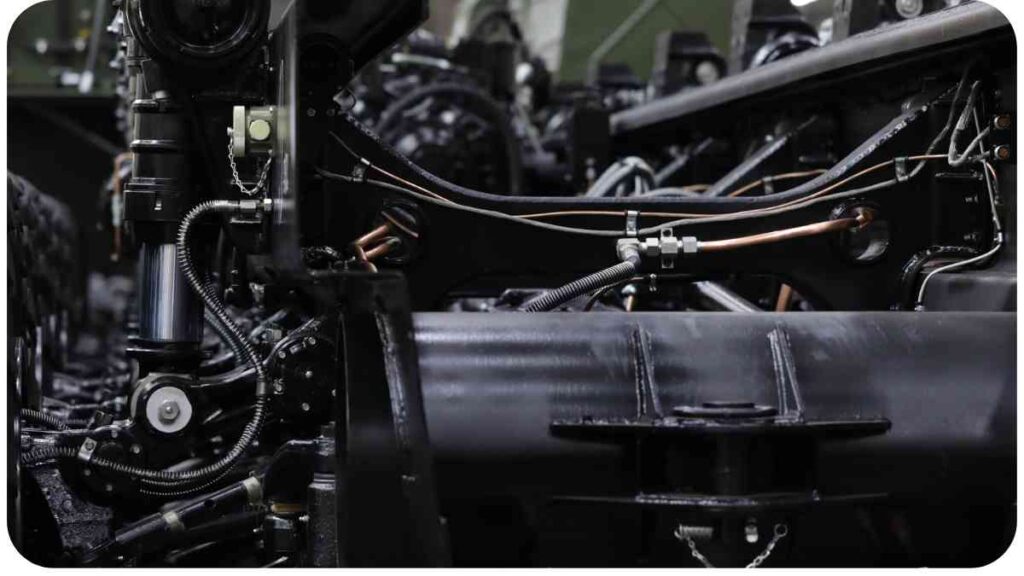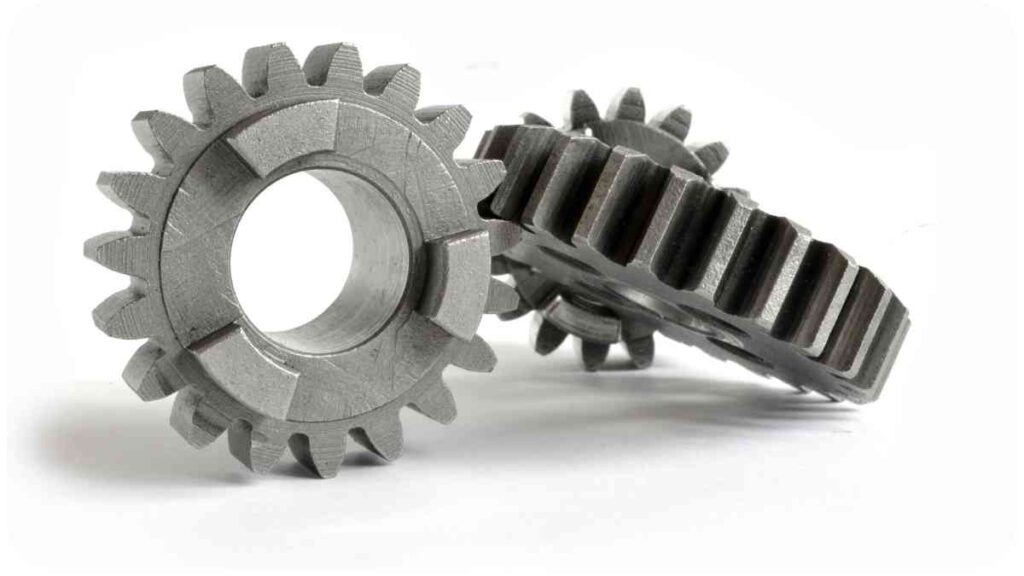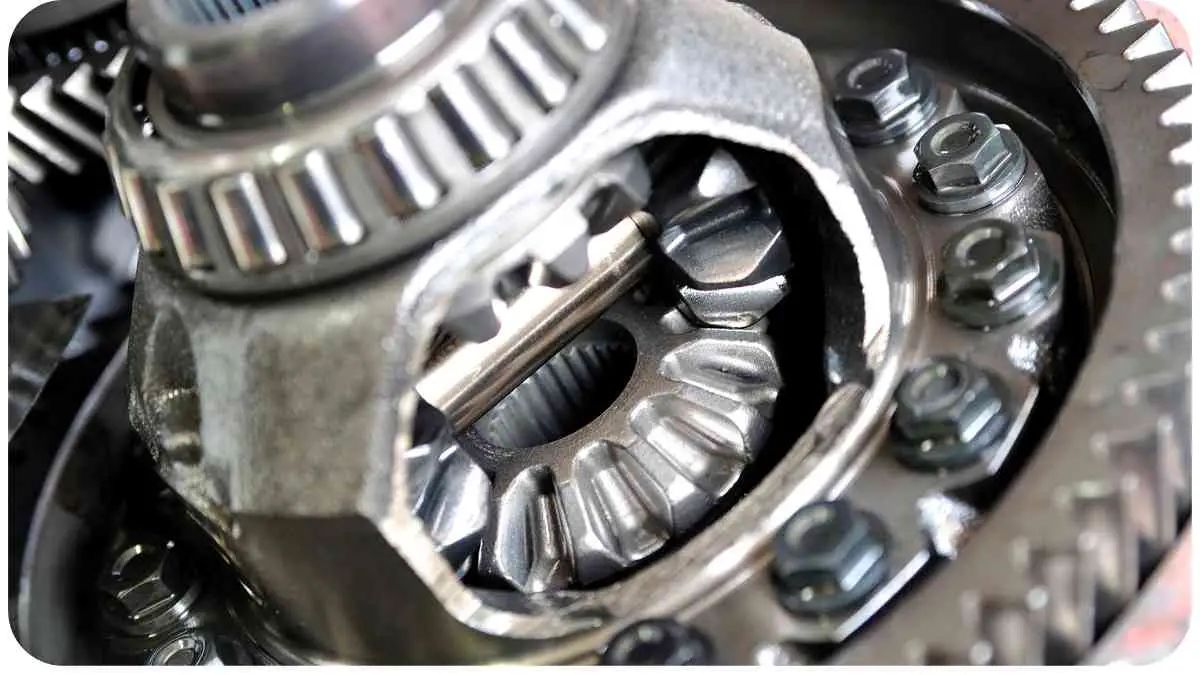Off-roading can be an exhilarating adventure for those who seek thrilling challenges and enjoy exploring the great outdoors. Whether you’re driving through mud, climbing steep rocky terrains, or navigating through sandy deserts, it’s crucial to have a vehicle equipped with the right tools and components to achieve optimal performance.
One such essential component in off-roading vehicles is differentials. In this article, we will delve into the role of differentials in off-roading, discuss their types, explore the importance of proper maintenance, address common problems, and provide tips for a successful off-roading experience.
| Takeaways |
| Proper usage of differential lock enhances off-road performance. |
| Consult professionals for proper installation of a locking differential. |
| Regular maintenance and inspections are crucial to prevent differential damage. |
| Differential fluid checks and changes are important for optimal performance. |
| Adjusting tire pressure according to terrain improves traction. |
| Smooth throttle control minimizes the risk of losing traction. |
| Choose the right line and use differential capabilities to overcome obstacles. |
| Post-trip inspections help detect any differential issues early on. |
| Different terrains may require specific differentials for optimal performance. |
| Limited-slip differentials offer a balance between traction and maneuverability. |
2. What are Differentials?
Differentials are an integral part of a vehicle’s drivetrain system that ensures power is distributed efficiently to the wheels. In simplest terms, differentials allow the wheels to rotate at different speeds while maintaining traction and stability, especially during turns. They achieve this by distributing torque to each wheel independently, depending on factors like wheel speed and road conditions.
When off-roading, tackling diverse terrains is essential for an exhilarating experience. Understanding the role of differentials in off-roading can make a significant difference in conquering challenging landscapes. Learn more about it in our article on different terrain.
3. Types of Differentials
There are various types of differentials available in the market today, each with its own set of advantages and disadvantages. Let’s take a closer look at two common types:
Table: Types of Differentials
| Differential Type | Description |
| Open Differentials | The most common type of differential found in vehicles. They allow the wheel with less traction to spin freely while transferring power to the wheel with better grip. |
| Locking Differentials | These differentials lock both wheels together, ensuring both receive equal power. It provides increased traction and is ideal for challenging terrains like deep mud or large rocks. |
4. Understanding Differential Locking

Off-roading often demands additional traction to overcome obstacles and uneven terrain. Differential locking can significantly enhance a vehicle’s performance in such situations.
Locked Differentials
Locked differentials, also known as “lockers,” have the ability to lock both wheels together, creating a solid axle. This ensures both wheels receive equal power, regardless of traction conditions. Locked differentials distribute torque equally to all wheels, maximizing traction while maintaining stability during challenging off-road scenarios. However, they can be challenging to maneuver during turns on hard surfaces, causing tires to skip and stress the drivetrain.
Ensuring the safety and reliability of your off-road adventures starts with a thorough pre-trip inspection. Discover the key steps in our guide to pre-trip inspection.
Limited-Slip Differentials
Limited-slip differentials (LSDs) provide a compromise between open and locked differentials. They use a series of clutches or viscous fluid to direct more power to the wheel with better traction. LSDs ensure both wheels receive power but allow some difference in wheel speed during turns. This feature enables better maneuverability on various surfaces while still providing enhanced traction.
5. Key Factors for Choosing the Right Differential

Selecting the appropriate differential for your off-road vehicle depends on several factors. It is vital to consider the following aspects to maximize performance and safety while off-roading:
Vehicle Usage
Understanding how and where you plan to use your off-road vehicle is crucial when selecting a differential. Consider whether you’ll be primarily driving on highways or dedicated off-road trails, as this will determine the type of differential that best suits your needs.
Suspension problems can hinder your off-road experience. Be prepared to troubleshoot and fix common suspension issues. Explore our article on suspension problems for valuable insights.
Terrain and Traction Requirements
Different terrains demand specific traction requirements. If you frequently encounter slippery or uneven surfaces, choosing a differential that provides enhanced traction, such as a locking differential, might be necessary.
Budget and Maintenance Considerations
Budget and the cost of differential maintenance are significant factors to consider. Locking differentials tend to be more expensive to purchase and maintain compared to open differentials. It’s essential to weigh out the pros and cons based on your financial constraints and maintenance preferences.
6. The Importance of Proper Differential Maintenance
Proper maintenance of differentials is crucial to ensure optimal performance and longevity. Neglecting regular maintenance can lead to potential problems and compromise your off-roading experiences. Here are some key maintenance tips to keep in mind:
Proper tire inflation is crucial for optimal off-road performance. Get the facts on how to correctly inflate your tires to maximize your vehicle’s capabilities on challenging terrain.
Table: Differential Maintenance Tips
| Maintenance Tip | Description |
| Regular fluid checks and changes | Differential fluid plays a vital role in lubricating and cooling the components. It’s important to check fluid levels and replace it at recommended intervals. |
| Inspect for leaks and damage | Regularly check for any signs of leaks or damage to the differential housing or cover. Leaks can lead to fluid loss and cause significant damage if left unattended. |
| Grease or oil universal joints | Universal joints allow the driveshaft to transfer power to the wheels. Regular greasing or oiling prevents unnecessary wear and tear and ensures smooth operation. |
| Tighten fasteners and bolts | Ensure that all fasteners and bolts are properly tightened. Loose bolts can cause vibrations, noise, and even lead to structural damage over time. |
7. Common Differential Problems and Solutions
Off-road adventures can put a strain on differentials, leading to potential problems. Here are some common issues you may encounter and their recommended solutions:
Table: Common Differential Problems and Solutions
| Problem | Solution |
| Leaking Differential Fluid | Check for leaks and replace the damaged seals or gaskets. Ensure the differential is properly sealed to prevent further fluid loss. |
| Noisy Differentials | Excessive noise may indicate worn or damaged bearings or gears. Consult a professional mechanic to diagnose and replace the components. |
| Differential Failure | Severe damage or worn components may require a complete differential replacement. Regular maintenance and inspections can help avoid this. |
| Remedies and Repairs | The specific remedy will depend on the issue. It’s always best to consult a professional mechanic or differential specialist for repairs. |
8. Tips for Off-Roading with Differentials
Off-roading with differentials requires skill, knowledge, and attentiveness. Here are some valuable tips to enhance your off-roading experience and make the most of your vehicle’s differentials:
Adjusting your off-road vehicle’s shocks can greatly impact its handling and comfort. Learn the ropes of shock adjustment in our guide on shock adjustments, ensuring a smoother ride during your adventures.
Tire Pressure Adjustment
Adjusting your tire pressure according to the terrain can greatly improve traction and maneuverability. Lowering the pressure allows the tire to conform to obstacles, providing better grip. However, remember to reinflate to the recommended pressure after off-roading to prevent adverse effects on tire wear and fuel efficiency.
Proper Throttle Control
Maintaining smooth and controlled throttle inputs is essential, especially on challenging off-road terrains. Avoid sudden bursts of power that can lead to loss of traction. Gradually apply and release throttle to keep the vehicle stable and minimize the risk of getting stuck.
Tackling Obstacles
Approaching obstacles correctly can help minimize strain on differentials and increase the likelihood of successfully overcoming them. Maintain a slow and steady pace, choose the right line for optimal traction, and use your differential’s capabilities to navigate through challenging terrain.
Post-Trip Differential Inspection
After an off-road adventure, it’s essential to inspect your differentials for any signs of damage or wear. Look for any leaks, unusual noises, or visible damage. Regular inspection and preventive maintenance can help detect issues early and prevent major problems down the line.
9. Frequently Asked Questions (FAQs)
Q: Can I install a locking differential on my existing off-road vehicle?
A: In most cases, it is possible to install a locking differential on your vehicle. However, it is essential to consult with a professional mechanic or differential specialist to ensure compatibility and proper installation.
Q: How often should I change the differential fluid?
A: The frequency of differential fluid changes depends on various factors such as driving conditions, vehicle manufacturer recommendations, and the type of differential. Generally, it is recommended to change the fluid every 30,000 to 50,000 miles, but it’s best to refer to your vehicle’s manual for specific guidelines.
Q: Can I use a limited-slip differential for extreme off-roading?
A: Limited-slip differentials can provide enhanced traction in various off-road scenarios. However, for extreme off-roading conditions such as deep mud or large rocks, a locking differential is often preferred as it ensures equal power distribution to both wheels.
Q: How can I prevent differential failure during off-roading?
A: Regular maintenance, including fluid checks, proper lubrication, and inspection for leaks or damage, can help prevent differential failure. Additionally, driving with caution and avoiding excessive strain on the differential can prolong its lifespan.
10. Conclusion
Understanding the role of differentials in off-roading is essential for achieving optimal performance and tackling challenging terrains. By selecting the right differential based on your needs, maintaining it properly, and using off-roading techniques effectively, you can enhance your off-road adventures while ensuring the longevity of your vehicle’s components.
Remember to consult professionals for any concerns and enjoy the thrill of off-roading while prioritizing safety and maintenance. Happy off-roading!
Further Reading
Here are some additional resources to expand your knowledge on differentials and their role in off-roading:
- How to Use Diff Lock the Right Way: This article provides valuable advice on utilizing differential lock properly, ensuring optimal performance in off-road situations.
- Understanding the Role of the Differential in Heavy-Duty Truck Drivetrain Systems: Explore the specific role of differentials in heavy-duty truck drivetrains, offering insights into their importance and function.
Please note that while these resources provide valuable information, it’s essential to consult with professionals and refer to your vehicle’s manual for the most accurate and up-to-date guidance.
FAQs
Q: Will using a locking differential damage the drivetrain of my vehicle?
A: Proper use of a locking differential will not cause any damage to the drivetrain. However, it is essential to avoid using a locked differential on hard surfaces or during sharp turns, as it can result in tire skip and increased stress on the drivetrain.
Q: Can I install a locking differential on my vehicle if it doesn’t come equipped with one?
A: In many cases, it is possible to install a locking differential on a vehicle that didn’t come with one originally. However, it’s recommended to consult a professional mechanic or differential specialist to ensure proper installation and compatibility with your specific vehicle model.
Q: Do I need to engage the differential lock all the time during off-roading?
A: No, you only need to engage the differential lock when additional traction is required, such as in challenging off-road conditions. Using it unnecessarily on regular roads can negatively impact vehicle maneuverability and increase tire wear.
Q: How do I know if my differential is leaking fluid?
A: Signs of differential fluid leakage may include puddles or drips on the ground beneath your vehicle, a burning smell, or low fluid levels. If you suspect a leak, it’s important to address it promptly to prevent potential damage or failure of the differential.
Q: Can I use limited-slip differentials for everyday driving?
A: Yes, limited-slip differentials can be used for regular on-road driving. They provide enhanced traction during normal driving conditions without the drawbacks of a fully locked differential. However, it’s important to note that each vehicle and differential type may have specific considerations, so it’s best to consult your vehicle’s manual or a differential specialist for guidance.
Please keep in mind that the specific recommendations and answers may vary depending on your vehicle’s make and model. It’s always a good idea to consult professionals and refer to your vehicle’s manual for accurate information and guidance.

Hi there! I’m Hellen James, and I’m the author of Unified Off-roads. I’ve been driving off-road for more than ten years, and I’ve had a lot of fun in that time—and a few not-so-great experiences too. But I’ve always wanted to help other people get started off-roading, so I decided to start this blog to share my knowledge with others.


